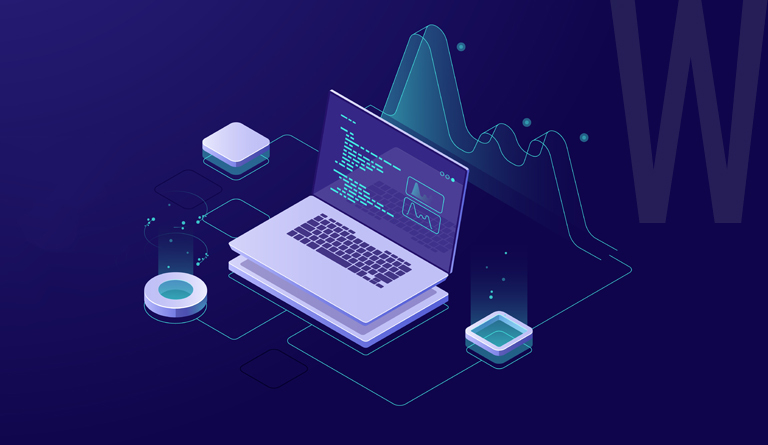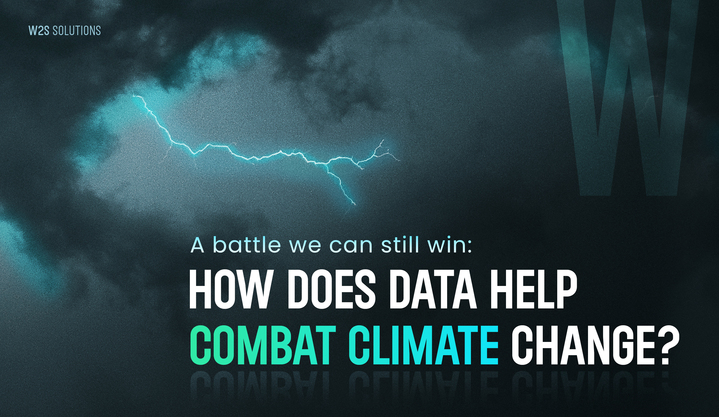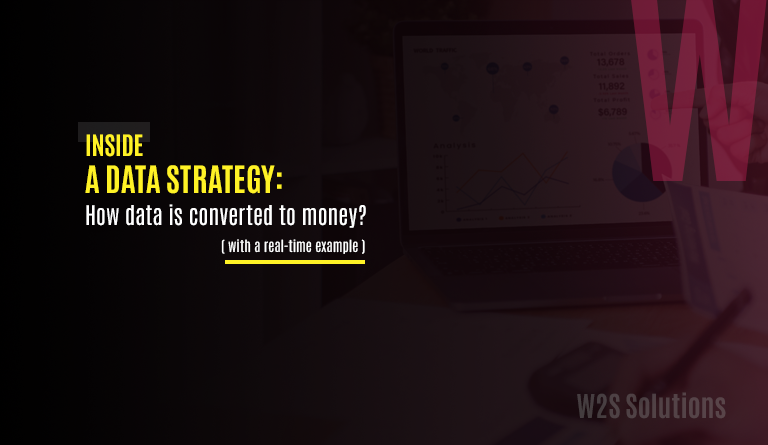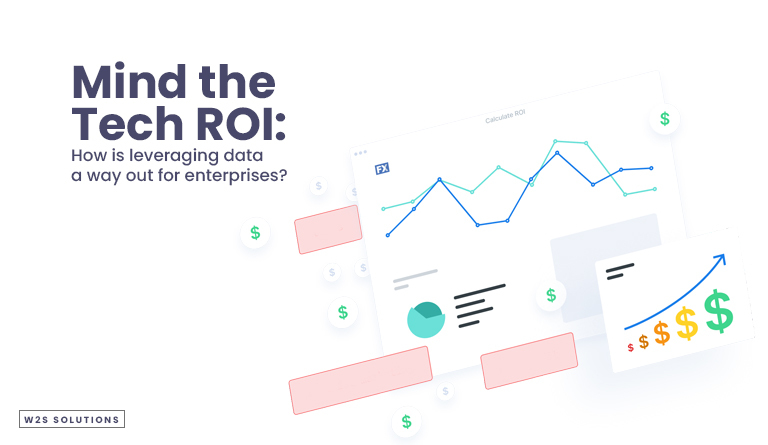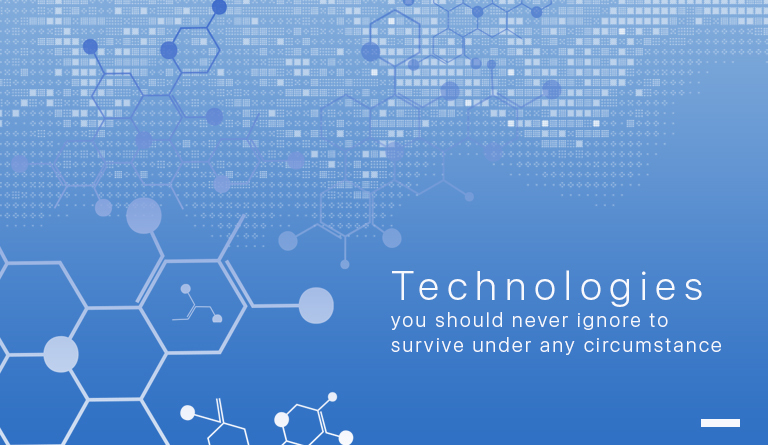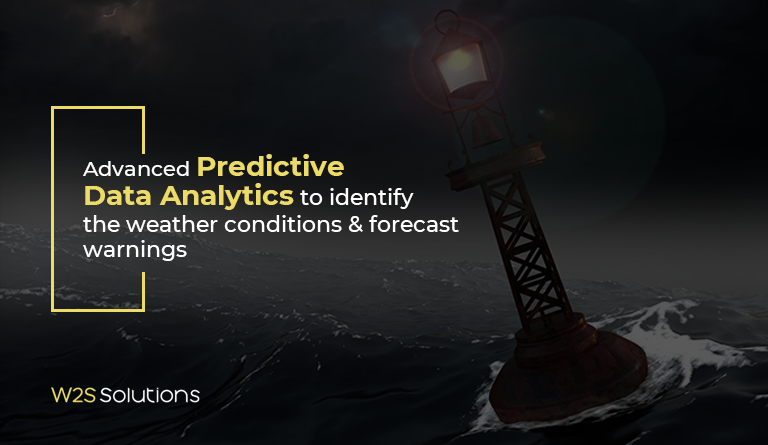Big Data is not new, but is definitely the future. Organizations around the world are experiencing vast amounts of data coming into their systems at incredible speeds, thanks to digitalization, which is prevalent in every industry.
Big Data and related systems are a vital piece to the puzzle, as organizations try to grapple and make sense of such grand volumes of data. But, organizations need to be cognizant of the power of Big Data Analytics, and the tools necessary to navigate the data landscape, ultimately helping them scale their businesses to meet global demand and growth trajectories.
Understanding Big Data Analytics, beyond just the term, includes being able to see which type of Analytics is needed for what facets of business. C-suite executives around the world are able to make quick & informed decisions based on data, by applying the right analytical techniques to specific aspects of their operations and delivery.
There are four major types of Big Data Analytics that may be relevant to any business, as the applicability of these analytics methods are diverse and can impact any business, given a clear understanding of business goals.
The four major types of Big Data Analytics include:
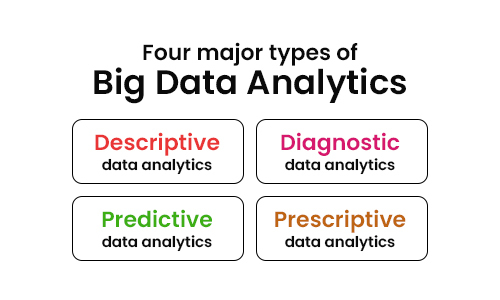
1. Descriptive
One of the more common forms of analytics, Descriptive Analytics is where the organization is able to manipulate the vast amounts of data into more understandable charts and trends.
This analytics is what empowers organizations to create dashboards based on data, helping them see how a metric is performing, or where a certain trend is going. But for it to fuel impactful decisions, it usually needs to be paired with one of the other types of analytical methods.
In layperson terms: It tells us what happened / is happening.
2. Diagnostic
Diagnostic Analytics is deployed when there are vast amounts of data related to a certain event and you need to know why what happened. This is essential for executives to derive a clear understanding of why their business is behaving a certain way.
This analytical technique allows you to understand the reasons behind the behaviors of resources and systems, including customer & employee behavior; sales and service behavior, and production and delivery behavior. It can lead to better business decisions that are directed towards optimizing processes at every level of the organization.
In layperson terms: It tells us how something happened.
3. Predictive
Predictive Analytics works well for models where the organization is looking to improve operations in their business by leveraging the relevant data. As the name suggests, this type of predictive analytics solution helps in getting accurate and reliable predictions and roadmaps. Technology such as Machine Learning, AI, and statistical modeling can be used extensively to improve predictive accuracy.
Organizations look to Predictive Analytics to work out possibilities and choose the most optimal course corrections for their operations and business.
In layperson terms: It tells us what will / can happen.
4. Prescriptive
An extension of Predictive & Descriptive, Prescriptive Analytics can help organizations find solutions for optimizing business processes. One of the most important analytical models, organizations can deploy this to organizational processes such as production, sales and marketing campaigns, and customer service.
Organizations such as Waymo (Google’s self-driving cars), deploy this analytical model in their self-driving algorithms to optimize on-road autonomous and semi-autonomous vehicle technology.
In layperson terms: It tells us what we should do / could be doing.
Business Possibilities
-
Risk Management
One of the most crucial aspects of industries with highly sensitive data such as financial records, data-backed risk management helps businesses identify risk at range because of greater visibility and predictive abilities.
By combining the power of data analytics with advanced statistical modeling, businesses can manage risk intelligently, making decisions confidently and at scale.
-
Innovation
With a more data-backed approach in design, development & manufacturing, organizations are able to see beyond the obvious and delve into innovation. For example, organizations are able to identify how products can be optimized to better suit the needs of the larger market, thanks to the incredible amounts of customer data they receive.
-
Prediction & Optimization
Predictive Analytics has opened doors for organizations to see into the future of their businesses; organizations can use data to see how processes are evolving and potential outcomes of current course of action, as well as alternative options.
This has empowered organizations to optimize their operations at all levels and create better business outcomes in the long run.
-
Maximizing Profits
The abundance of analytical data at decision-makers’ disposal, ensures sure-fire long term success. And what better way to measure success, than to look at profits and YoY growth trajectories.
Organizations are able to understand and drill down to the molecular level of processes to ensure optimization towards the bottom-line.
Choosing the right implementation partner
You know your data best, but an ideal implementation partner has to know it better. There are several ways to figure out the best fit partner for your organization, but the most simplest way is to identify the process methodology implemented.
Seasoned, experienced Data consulting partners usually have a well-structured methodology plotted out, that usually involves your team as well.
Some of the most vital steps that falls in this bracket are:
1. Understanding organizational infrastructure
Because without a clear understanding of systems and processes, the implementation partner will not have a clear view if data inflow and might miss vital pieces of information.
2. Understanding data infrastructure
Getting a clear understanding of the kind of data, volume and velocity is necessary to be able to set up the systems in place to process all the information.
3. Building a data strategy
A precise data strategy is essential to ensure that the data is collected, manipulated, plotted and used the right way, ensuring operational efficiency.
4. Data Collection
The process of gathering, measuring, and analyzing data from a variety of sources is a painstaking process that requires the partner to diligently work with your team.
5. Data Validation
Beyond gathering the data, validating the information for precision and veracity is essential to the accuracy of insights derived from the data.
6. Data Cleaning
Once Validation is completed, the data has to be cleaned and structured into manageable chunks for an efficient analysis.
7. Data Analysis
This step is pretty standard and all implementation partners offer this – but it will nowhere be useful if any of the steps before this are skipped.
8. Data Optimization
The most important aspect of the entire process, this step ensures the data is optimized for user consumption.
9. Deployment
Solution deployment is a step that most consultants might miss given that their part ends with analysis – it is important to understand what to do with all the gained insights.
10. Support & Maintenance
Like all systems, Big Data Analytics requires constant support and maintenance to ensure the system scales with the organization.
But if you still have questions on choosing the right implementation partner, you might want to get on a call with our in-house data experts to understand how to find the missing piece in your organization: data and analytics.
Citations:
The best-related articles:
Cheatsheet: Big Data And The 4 Types Of Big Data Analytics
A New Phase In The Industry: How Is Predictive Analytics Helping Businesses To Stay Sharper?







